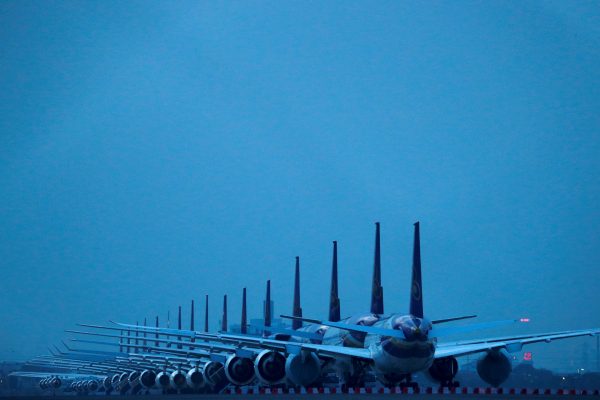On 15 June 2021, the Central Bankruptcy Court in Bangkok finally approved Thai Airways’ 400 billion baht (US$12.2 billion) debt restructuring plan. It was a long-awaited court judgment after the national carrier last year recorded a net loss of 141.2 billion baht (US$4.3 billion) and filed for bankruptcy.
Thai Airways is not the only national carrier in Southeast Asia suffering from mounting debt. Singapore Airlines and Vietnam Airlines, both state-owned, have respectively accrued SG$14.3 billion (US$10.6 billion) and 57.8 trillion dong (US$2.5 billion) in debt.
Many national carriers had already long been highly leveraged. While the pandemic might have worsened their cash flows, many benefited from early policy responses to the pandemic, including state capital injections, subsidies and bankruptcy moratoriums. The ongoing pandemic could serve either as a wake-up call for them to revamp their poor corporate governance or disguise the true nature of their going concern.
SOE corporations are (or should be) founded to generate profit to contribute to the state budget to maximise public welfare. But when SOE corporations fail to provide returns and become highly indebted, governments often step in by injecting equity to strengthen their negative balances and delay defaults, bankruptcies and massive layoffs. Depleting state reserves defeats the central purpose of these SOE corporations.
Various SOE corporations have employed different measures to deal with mounting pandemic-induced indebtedness. Given the degree to which they are often leveraged, there is a multiplier effect on any loss or gain. The moral hazard is that once they suffer from huge financial losses, government bailouts are expected, regardless of whether they address long-term structural issues. But bailouts or special assistances should be accompanied by corporate governance reforms. The case of JNR showed how corporate governance reforms transformed a once heavily indebted SOE corporation into efficient, market responsive companies.
JNR began to lose market share in the Japanese transport sector in the late 1960s. Inefficient management and fierce competition from other modes of transport were some of the factors that brought about its downfall. In 1987, it recorded a deficit of 37.1 trillion yen (US$338.8 billion). JNR had become so heavily indebted that the JNR Restructuring Act was brought about to completely reform it, from debt restructuring to reduction, regionalisation and privatisation.
The Japanese government established the JNR Settlement Corporation in 1987, which fully owned seven newly established Japan Railway (JR) subsidiaries. These seven JR companies assumed a minimum of JNR’s assets and liabilities necessary to operate, while the JNR Settlement Corporation assumed and settled the remainder. JR companies then began to privatise, and the JNR Settlement Corporation was dissolved. The Japan Railway Construction Public Corporation was formed to resolve JNR Settlement Corporation’s remaining liabilities.
Debt restructuring helps highly indebted companies achieve clean balance sheets and appeal to investors. The reduction, regionalisation and privatisation of JNR into seven JR companies streamlined bureaucracy and created regionalised companies tailored to local market appetites. JR companies soon began turning a profit.
JNR’s series reforms were remarkable. Not only were they gradually implemented over 30 years of successive governments, they also made an impression on other domestic industries such as shipping, which followed suit.
JNR’s reforms are not a panacea, and each country and SOE corporation is distinct. But national carriers in Southeast Asia could draw lessons from JNR’s reforms. SOE airlines in Southeast Asia, such as Thai Airways and Vietnam Airlines, are arguably analogous to JNR — they have strong domestic markets and operate in the important transport sector. Like JNR, they should be reformed altogether.
If they had accumulated massive debt before the pandemic, to which the pandemic only added, government recapitalisation and subsidies alone would be counterproductive. No matter how large the amount, it would never be enough.
Growing fiscal deficit and pandemic expenditure today mean that governments need to reorganise their spending priorities and rethink the socioeconomic costs of keeping highly leveraged SOE corporations.
Reforms need not involve hard and fixed rules; different corporate cultures, regulatory regimes and markets require different solutions. But today JNR is a legacy of the antidotes that rejuvenated a once heavily indebted SOE corporation. National carriers in Southeast Asia should take note.
Luther Lie is the President of the Indonesian Center for Law, Economics, and Business, Jakarta.

